Dyed braid extensions can make you look like a totally different person. Getting your already dyed hair braided is a popular option you have.
Yes, it is possible to braid your hair after dying it, but this is not a good idea. However, you have to wait at least two weeks first. This is because hair dyes contain strong chemicals which can overextend and damage your hair.
You also need to be careful about how you braid them because you might accidentally pull out some of the color from your scalp. In order to recover, your hair requires additional care and treatment.
Braids should be created on healthy hair extensions. When you choose to dye hair, you already lose most of the natural oils and important nutrients from your hair and scalp.
But, there are some measures you can take to get a breakthrough on this. All of them will be discussed in this article.
What colors are braided hair wigs available in?
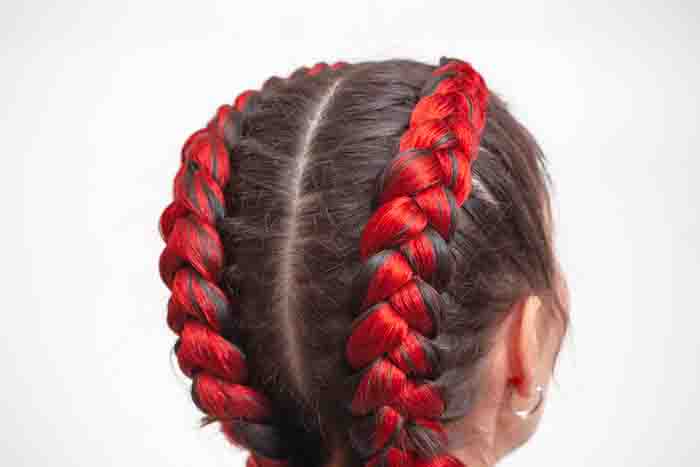
One solution to this major dilemma is to use braided hair wigs. Instead of tampering with your natural hair, you can go down this route. There are many shades of dyed hair extensions available in the market.
You can choose from the options below.
- Purple/Burgundy: Instead of getting your hair braided, go for artificial hair dyed with purple color. It’s a bold shade that will create a strong impression of you.
- Grey: Grey hair(some people spell it gray hair) is a sober, yet vibrant color. If you get braids of grey color, it will instantly make you a classic example of simplicity with valor.
- Red: Style your hair with a daring red-colored wig of braids. Do not braid your hair, just put one wig on, and you are ready to rule the circle.
- Others: You can get braids of blue or blonde shades. There isn’t any shortage of options.
Can you dye hair while in braids?
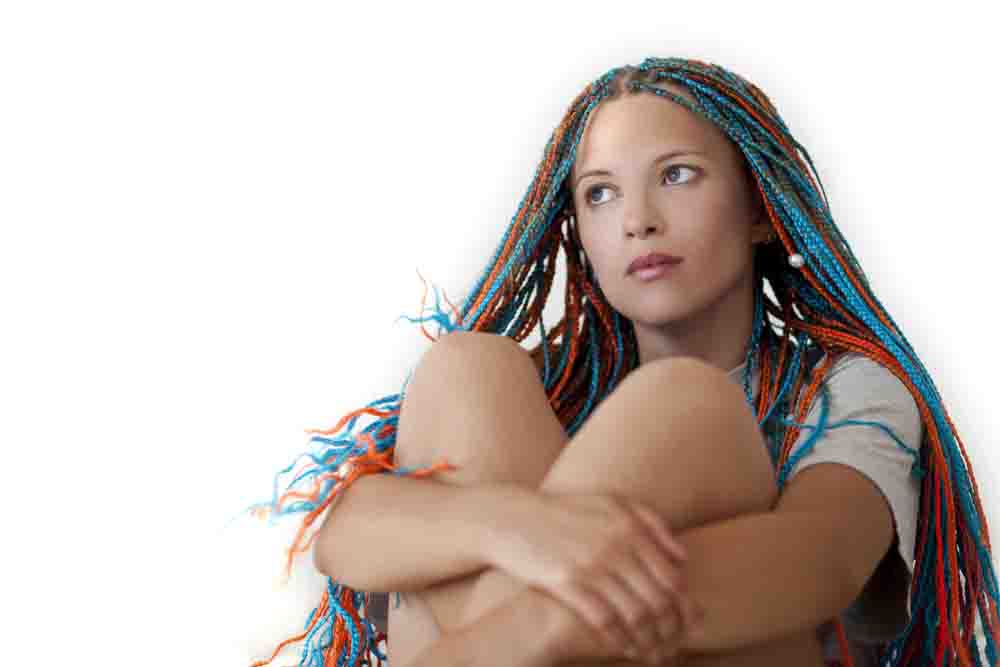
The safest advice for you is to not dye your hair when you are done braiding. A braid can easily turn that strand of hair into damaged hair. But, it is not the case all the time. There are certain steps you can take in the dyeing process that can result in some good-looking vibrant braids.
Braiding increases the pull on your hair, leading to hair loss. Dying hair over the braids will totally damage your cuticle layer(the most exposed surface of the hair shaft) and cause hair breakage.
What happens to your hair extension when you dye them with braids on?
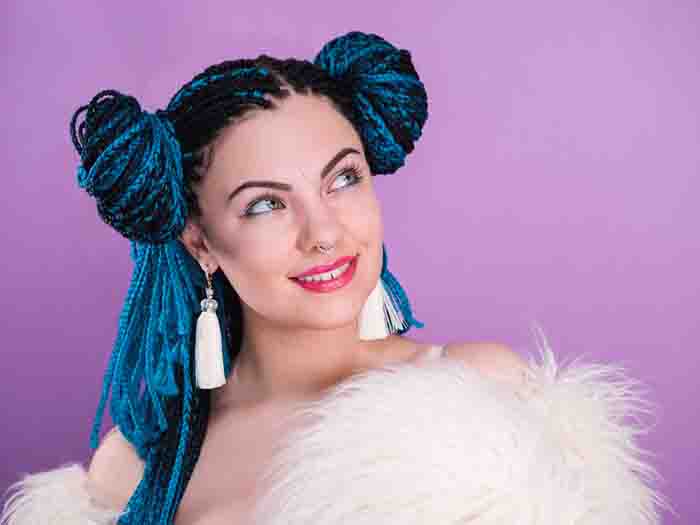
If you dye your hair over a braid, it will cause more harm, by sucking out the overall moisture from that particular hair strand. The dyed color will strip off all the natural oils from your scalp.
Another problem is that the color will only cover the completely exposed part of each braid. The dye will not penetrate the braids. Therefore, when you open the braids up, the dye will look dissolved into your hair.
Dyeing the braids with a dye made of chemicals will make the split ends of your hair brittle, and thereby more prone to breakage. Weak split ends will decelerate the growth of your hair.
Colored hair over braids leads to loss of more pigment than usual, further adding to the chances of hair breakage.
How long can the dyeing of natural hair last?
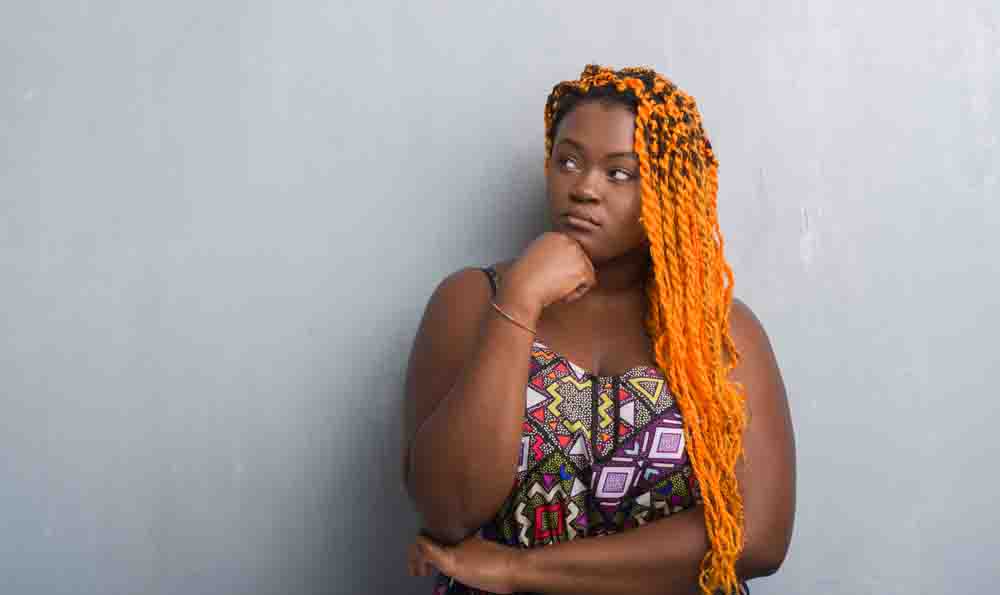
It will last for about as long as the braids last. Given that you dye your hair with very good hair color, it can last a long time.
But the real problem has been mentioned earlier. As dyeing over the braids does not cover the whole hair area, they will look broken when the braids are removed.
However, dyeing with hair colors made with the average chemical bonds will not last too long. They will also ruin the natural style of your hair, making them frizzy and dry.
The endurance of the color of your braids also depends on the washing process you follow. It will last for less time if you wash your hair too often.
Using a fair bit of dry shampoo is the best idea in this case. It will also help to keep each braid in the proper shape to look good.
Note: Dyeing without braids will cover all the hair shafts. So, using a protective style after dyeing this way will lock the color for a long time.
How long should I wait to dye my hair after removing braids from hair extensions?
You should wait at least two weeks after removing the braids from your hair before coloring them. In these couple of weeks, you should treat your hair and properly prepare it for the dyeing session.
Adding moisture to your tired hair should be your main focus. Two weeks are enough to rejuvenate your hair and make it healthy.
At least two weeks of time is a must. But, a break longer than that would not harm your hair. The longer the break, the more healthy your hair will become.
How to prepare your hair for dyeing after braiding?
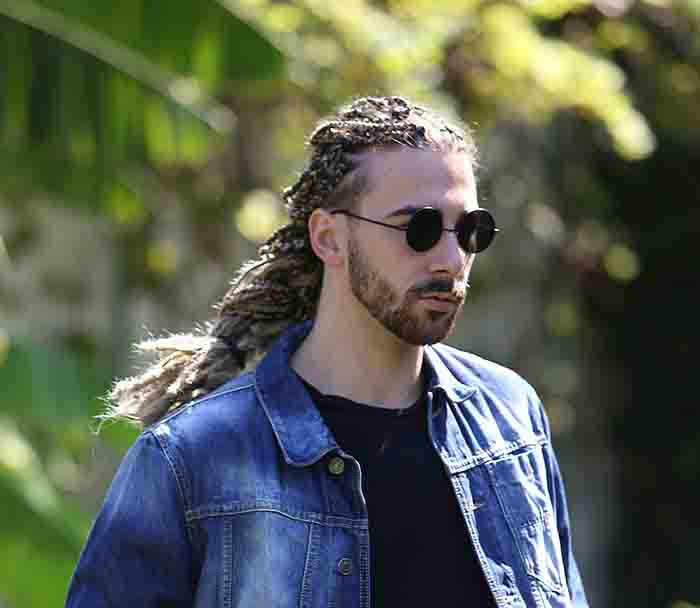
You need to wash your hair with natural products and a deep conditioner. As its name suggests, it will deep condition your hair and take them to a healthy standard.
Braiding makes your hair dry and weak. Using natural hair products will retain the moisture that the products made of chemicals you used for styling had easily washed off.
Wash your braids with warm or hot water. A hot shower will soothe your scalp from the pain of the weight created after you braid your hair.
Wait at least two weeks before applying dye to your braids. And avoid chemical treatments during this period, otherwise, all the good work you did will get nullified.
How to dye braiding hair?
Wash your hair the day prior to the dyeing process will take place. Doing so will clean your whole head and get ready for getting colored.
Wash them with a mild shampoo, and do not apply any styling product on your freshly washed hair.
Note: Given that you had dyed your hair earlier, make sure you allow all of the previous color to fade off. It might take a few weeks.
The best thing to do if you really love both dyes and braids together is to use semi-permanent hair dyes. They give you the opportunity to start all over again, and also sustain the damage created by them for a shorter period of time.
The steps to dye your braiding hair
- Consult with a Stylist for Expert Advice: If possible, get in touch with an expert stylist. You and your stylist may not be on the same page all the time, but dyeing your hair alone is a difficult task.
- Prepare the Hair Color Mixture: Make the right mixture as instructed by the company of the hair color you bought.
- Apply the Mixture with a Spray Bottle: Put the mixture in a spray bottle, and spray it on your braids.
- Alternately, Apply with a Brush for Lower Penetration: You can also do it with a brush, but the level of penetration, in that case, will be low.
- Allow the Color to Dry and Settle on Braids: Wait for the color to dry and settle on your braids.
FAQs
In general terms, yes, it is bad for your hair. You can try it out, but most likely, you will see the bad side of it as well. Coloring strains your hair to the maximum level, and creating braids over them is not good.
Yes, you definitely can. You have to wait for a few weeks to allow your hair to repair. After your hair regains its optimum health, you can opt for coloring them.
Yes, they do. Both of them are pressurizing enough individually as well. Adding them up will break the hair ends, and cause hair to fall.
You can color those grey strands, but you may miss out on a few. Putting the greyed hair in the locks will be difficult for you to do alone. Someone else can do it for you, probably your stylist.
Burgundy, brown, blonde, pastel shades, dark red, blue, and purple. These are the boldest, and the best color ideas you can choose from.
You definitely can. That is easier to do compared to doing it on yourself. In fact, there are wigs of various color shades available already. You do not have to color them yourself if you find them.
Soak your kanekalon hair in a mixture of hot water and apple cider vinegar for 20 minutes. Get it out, dry it on a flat surface, and apply the spray or brushing process with your favorite color on them.
Micro braids are a type of hairstyle that has been around for centuries. They are not exclusive to African culture, and in fact, many cultures have their own version of micro braids. In general, micro braids are considered to be an acceptable hairstyle. However, some people may find them to be cultural appropriation. Additionally, micro braids can cause a sensitive scalp.
Some people prefer natural hair colors like black or brown for their braids, while others may opt for bold and bright colors like pink, blue, or purple. It is important to choose a color that complements your skin tone and style.
To care for braided hair, use lightweight scalp or hair oil to moisturize the scalp and hair, leave-in conditioner to keep the hair hydrated and soft, moisturizing spray to refresh and hydrate between washes, edge control or gel to tame baby hairs or edges, silk or satin scarf or bonnet to protect against friction while sleeping, and optional dry shampoo to absorb excess oil.
The chemicals used in hair dye can typically stay in your system for up to 48 hours, though this varies depending on the type of dye used. Generally, the chemicals are broken down and eliminated from the body within that time frame.
To remove hair dye from braids, you can try using a gentle clarifying shampoo, a color-removing product, or a mixture of baking soda and water. Be cautious not to damage the braids or your scalp.
Adding color to braided hair can be done using temporary hair color sprays, colored hair extensions, or hair chalk.
If you get braids after dying your hair, the braids may cause the hair dye to fade faster due to the manipulation of the hair during the braiding process. It’s best to wait a few days after dyeing your hair before getting braids.
To make permanent hair dye fade faster, you can wash your hair more frequently with a clarifying shampoo, use hot water while washing, and avoid using color-protecting products.
Vinegar can help fade hair dye, but it may not completely remove permanent hair dye. It’s best to use other methods or seek professional help for more effective results.
Baking soda is known to have some bleaching properties, but it may not effectively remove hair dye from hair.
Hairspray is not typically used to remove hair dye from hair. It’s best to use color-removing products.
Semi-permanent hair dye usually fades on its own over time with regular washing and exposure to the elements.
Hair dye may stain your shower if it comes into contact with the shower walls or floor. It’s best to clean any spills or drips immediately to prevent staining.
Options to lighten hair after dyeing too dark: clarifying shampoo, vitamin C treatment, hair color remover.
Clarifying shampoo is known to remove excess product buildup from hair, but it may not effectively remove hair color.
Braided line used in fishing is usually not dyeable as it is made of synthetic materials. It’s best to use pre-dyed braided lines available in various colors.
Hair extensions can be added to already braided hair for added length or color. Make sure to securely attach the extensions to the braids without causing damage.
To paint black braided hair, you can use temporary hair color sprays, hair chalk, or colored hair gels.
To make your braids look better, start with clean, well-conditioned hair, divide hair into even sections, braid tightly and evenly, use quality hair extensions, neaten edges, add accessories, and practice proper maintenance for a polished and stylish braided look.
Keeping dyed hair moisturized in braids is important to prevent dryness and color fading. You can use lightweight oils or leave-in conditioners to moisturize your braids regularly.
To hide the end of a braid, you can use a small elastic band or wrap the end with a piece of hair from the braid to secure it in place.
It’s generally recommended to wait a few days after getting braids before dying your hair to allow your scalp to heal and reduce the risk of irritation or damage to the braids.
After getting braids, avoid excessive manipulation or pulling on the braids to prevent damage to your hair or scalp. Be gentle when styling or washing your hair.
It’s generally recommended to give your hair a break for at least a few weeks to allow it to rest and recover from the tension and stress of braiding.
Hair may fall out after braiding due to tension and pulling, improper technique, prolonged wear, allergic reactions, and poor hair care practices. Braiding tightly, using excessive heat, neglecting proper care, and using harsh products can contribute to hair breakage and loss.
Dyeing your hair after a protective style like braids is possible, but it’s important to give your hair and scalp some time to rest and recover before applying more chemicals.
Sleeping with braids can cause friction and rubbing, which may lead to color fading or hair breakage. Protect your braids by wrapping them with a silk or satin scarf or using a satin pillowcase.
Braided hair dye may come out due to freshly dyed hair, poor dye quality or application, excess moisture or oil, friction, or fading/rinsing of semi-permanent dye. Properly rinsing, using quality dye, and avoiding friction can help prevent color transfer.
To prevent hair dye from rubbing off, avoid excessive touching or scratching of your hair, and use color-protecting products like hairsprays or serums to help set the color.
To prevent hair dye from transferring, avoid using oil-based hair products or exposing your hair to excessive moisture, which can cause color bleeding. Using a color-protecting spray or sealant can also help.
To stop color from bleeding, avoid washing your hair with hot water, use color-protecting products, and blot your hair dry instead of rubbing it vigorously with a towel.
Braids can get moldy if they are not properly dried or if excessive moisture is trapped in the braids. Make sure to thoroughly dry your braids and keep them clean and dry to prevent mold growth.
Permanent hair dye typically takes several weeks to wash out completely, but the duration may vary depending on factors such as hair type, color, and washing frequency.
To bring braids back to life, you can use a lightweight oil or leave-in conditioner to moisturize the braids, gently detangle them, and style them as desired.
To keep hair dye from staining, avoid using harsh hair products or exposing your hair to excessive moisture or heat. Protect your clothes and surfaces with towels or plastic wrap during and after dye application.
Vinegar is not known to seal in hair color. It’s best to use color-protecting products or seek professional help for preserving your hair color.
Permanent hair dye coming out may be due to various factors such as washing frequency, hair type, and color fading over time. Proper hair care practices and using color-protecting products can help extend the longevity of your hair color.
Related Articles:
- Should I Wear A Durag With Braids
Conclusion
Keeping your hair safe will only allow you to embrace different hairstyles on them. So do not take the daring step of making braids on your hair after coloring them. There are many other ways that have been discussed in this article that you can use to combine both styles.

